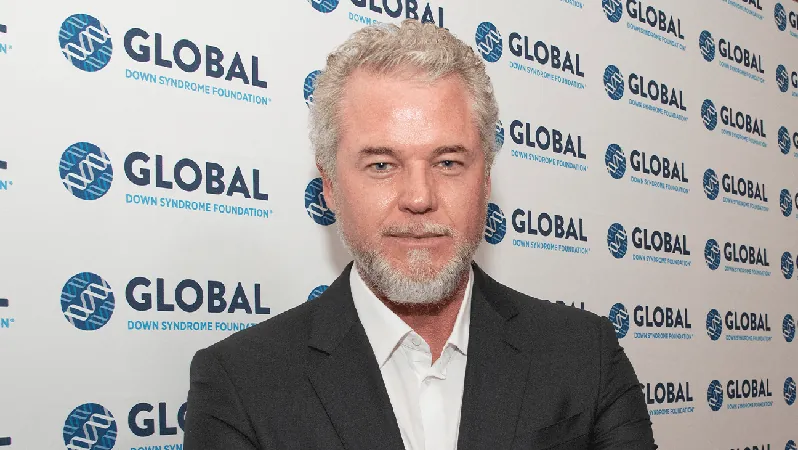
Why Are Camera RAW Formats So Confusing? Here’s What Manufacturers Say!
2025-04-04
Author: Wei
If you've ever dived into the world of photography, you've probably faced the classic dilemma: should you shoot in JPG or RAW?
JPGs are straightforward; they're instantly ready to be shared across social media platforms. RAW files, on the other hand, are a treasure trove of data that allows for extensive post-processing, producing higher-quality images. While the term "RAW" is commonly recognized in the photography industry, the reality is that each camera manufacturer has developed its own proprietary RAW format – creating a confusing patchwork of file types and compatibility issues.
The Great RAW Debate
Camera brands such as Canon, Nikon, Sony, and others offer unique RAW formats like Canon's CR3, Nikon's NEF, and Sony's ARW. The existence of these proprietary formats can lead to significant compatibility challenges for photographers, especially those who want to use their preferred editing software. Unlike JPG files, which are universally supported, editing RAW files often requires specialized software. Adobe's attempt to tackle this confusion with its universal RAW format, DNG (Digital Negative), has had limited success; while some manufacturers have adopted DNG, the big players remain committed to their own formats.
The Case for DNG
Created in 2004 by Thomas Knoll, the co-creator of Photoshop, DNG was designed to simplify RAW processing by being a royalty-free, open file format. It embeds camera metadata directly within the file, allowing for streamlined editing processes. This feature contrasts sharply with proprietary formats that often require separate metadata files. Smaller camera brands have warmly embraced DNG for its flexibility and ease of use, citing that it helps future-proof their products. Notably, Pentax offers users a choice between using its proprietary PEF file or DNG, demonstrating that some companies are willing to embrace open standards.
Why Stick to Proprietary Formats?
Larger companies like Sony and Canon argue that proprietary formats allow them greater control over the entire image processing pipeline. For instance, Sony states that its ARW format is tailored to maximize the performance of its specific image sensors and processing engines, ensuring optimized image quality. Canon echoes this sentiment, emphasizing that using its proprietary RAW format allows for better integration of unique features and optimizations.
However, this can come at a cost. Time and again, photographers have expressed frustration when software updates lag behind new camera releases, leaving them stuck with subpar editing options until compatibility is established. This issue disproportionately affects early adopters and professionals who need to work quickly and efficiently.
The Format Soup
Each manufacturer has its own RAW naming conventions: - **Canon:** CR3 (formerly CR2 and CRW) - **Nikon:** NEF and NRW - **Sony:** ARW - **Fujifilm:** RAF - **Panasonic:** RW2 - **OM System:** ORF - **Hasselblad:** 3FR - **Pentax:** PEF (with the option for DNG) - **Leica:** DNG (RWL on some models) - **Sigma:** DNG (previously X3F) - **DJI:** DNG - **Samsung:** DNG - **Apple:** DNG (Apple ProRAW)
Why Is It So Complicated?
Despite using similar sensors, as seen in brands like Nikon and Pentax, the proprietary processing and interpretation of image data create distinct visual signatures identifiable to each brand. While some argue that proprietary RAW formats offer unique advantages, many believe that open formats like DNG could serve just as well, if not better.
Ben Sandofsky, a developer at Lux Optics, argues that if manufacturers had a strong incentive, they could incorporate any unique features into DNG, thereby alleviating the burden on photographers.
Conclusion: A Hope for Change?
As frustrating as the RAW format landscape may seem right now, industry partnerships between camera brands and software developers like Adobe offer a glimmer of hope. Until a universally accepted format becomes the norm, photographers will need to navigate the maze of proprietary RAW files and software compatibility – and, unfortunately, this status quo appears here to stay, at least for the foreseeable future.
In conclusion, camera enthusiasts across the globe will just have to continue hoping their favorite editing software adapts quickly enough to keep pace with the ever-evolving landscape of camera technology. Wouldn't it be nice if one day we could all just streamline our workflow with a single, universally accepted RAW format? Time will tell!


 Brasil (PT)
Brasil (PT)
 Canada (EN)
Canada (EN)
 Chile (ES)
Chile (ES)
 Česko (CS)
Česko (CS)
 대한민국 (KO)
대한민국 (KO)
 España (ES)
España (ES)
 France (FR)
France (FR)
 Hong Kong (EN)
Hong Kong (EN)
 Italia (IT)
Italia (IT)
 日本 (JA)
日本 (JA)
 Magyarország (HU)
Magyarország (HU)
 Norge (NO)
Norge (NO)
 Polska (PL)
Polska (PL)
 Schweiz (DE)
Schweiz (DE)
 Singapore (EN)
Singapore (EN)
 Sverige (SV)
Sverige (SV)
 Suomi (FI)
Suomi (FI)
 Türkiye (TR)
Türkiye (TR)
 الإمارات العربية المتحدة (AR)
الإمارات العربية المتحدة (AR)